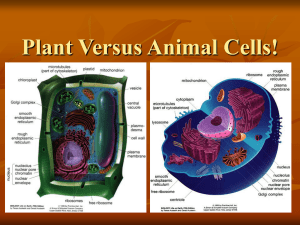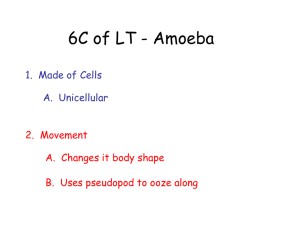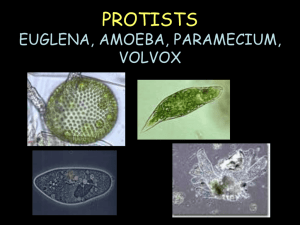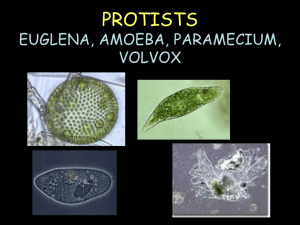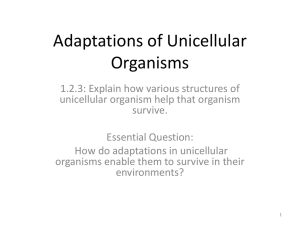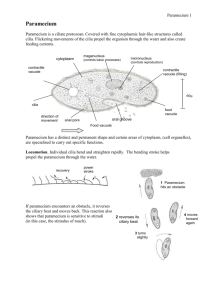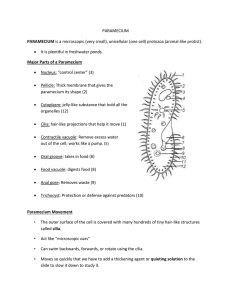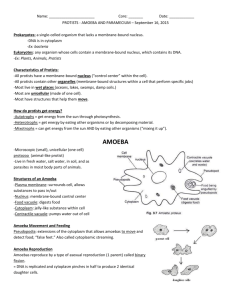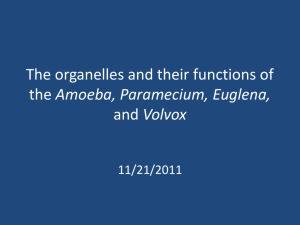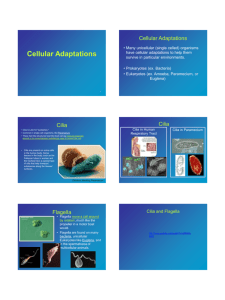Unicellular Organisms
advertisement
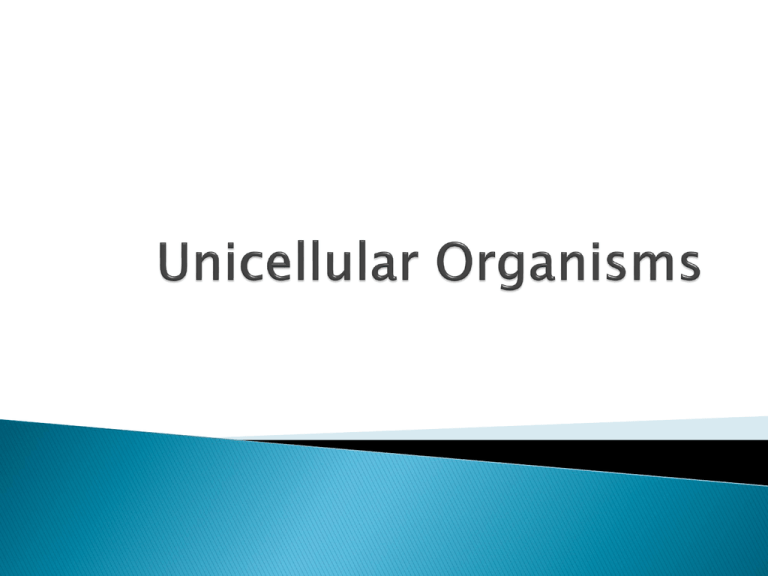
Any life form that consists of a single cell. They can move, digest food, and reproduce. Environment: Ponds or puddles with rich organic matter. Movement: By flagella Important Structures: ◦ ◦ ◦ ◦ ◦ ◦ Cell Membrane Nucleus: controls cell activities and contains DNA Flagellum: helps to move Chloroplast: helps with photosynthesis Contractile Vacuole: removes excess water Cytoplasm Food: They make their own food or absorb food from their environment. Chloroplasts help to make their own food by photosynthesis. Can absorb food from their environment. This means they are considered heterotrophic (consume food) and autotrophic (make food). Environment: Mud at the bottom of freshwater ponds. Movement: They change shapes which allows them to move (called shape shifters). Important Structures: ◦ ◦ ◦ ◦ ◦ ◦ Cytoplasm: carries out chemical reactions Nucleus: controls the cell Cell Membrane: allows substances to enter and exit the cell Food Vacuole: digests food Contractile Vacuole: gets rid of excess water Pseudopodium: what allows it to move over mud (false foot) Capturing Prey: They surround their prey and engulf it. Some are considered parasites. They reproduce asexually by splitting into two parts (fission). They eat: algae, bacteria, plant cells, and other unicellular organisms. Environment: ponds, ditches, shallow puddles Movement: They beat flagella which allows it to swim. Important Structures: ◦ Daughter colonies ◦ Flagella: helps to move ◦ Chloroplast: contains chlorophyll Food: makes its own food by photosynthesis. Daughter colonies mature and the Volvox bursts open to release them. Environment: Fresh water or stagnant water Movement: Cilia bend and straighten helping propel the paramecium through water Important Structures: ◦ Contractile Vacuoles (2): removes excess water ◦ Cytoplasm: water absorption ◦ Cilia: hair-like projections that propel it through water ◦ Nucleus: controls cell activities Food: uses cilia to sweep the food into the cell. They fire trichocysts at predators to defend themselves. Trichocysts sting the predator. They can move backward when they bump into something. They feed on bacteria, algae, and yeast through the cilia. They reproduce by splitting in two (fission). Algae live in the cytoplasm of a paramecium. Paramecium Pics: Amoeba Pics: Volvox Pics: Euglena Pics: ◦ infovisual.info ◦ goscienceseven.com ◦ microscope-microscope.org ◦ enchantedlearning.com ◦ microscopy-uk.org.uk ◦ leavingbio.net ◦ morning-earth.org ◦ rkm.com.au ◦ volvoxaureus.com ◦ infovisual.info ◦ fcps.edu ◦ schursastrophotography.com

